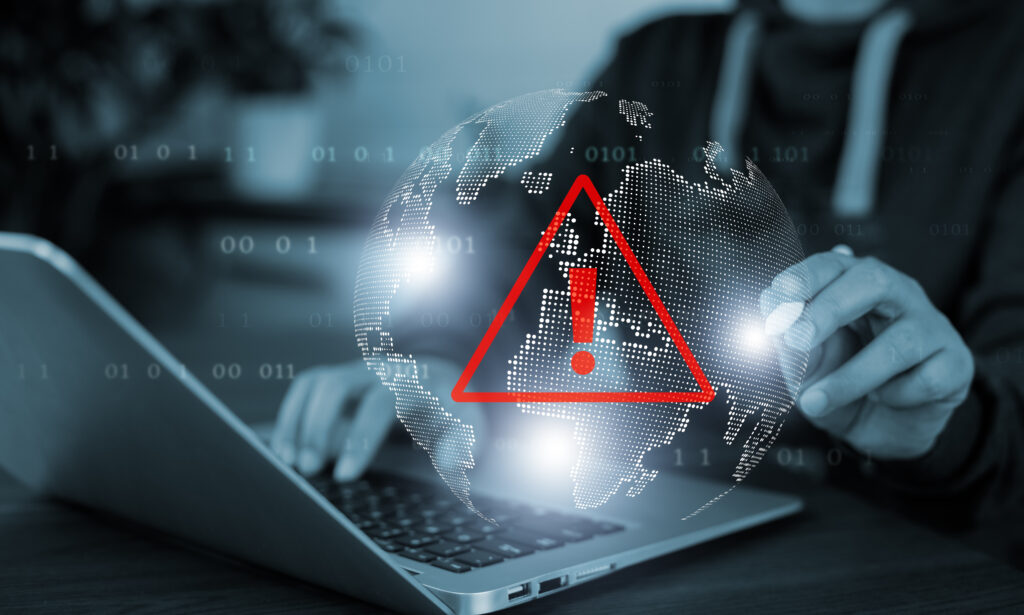Every click. Every login. Every integration.
In today’s digital-first world, these everyday actions can either build resilience — or open the door to threats.
Cyber risks are no longer isolated IT issues. They’re business-critical challenges that demand strategic, organization-wide attention. As we accelerate toward a hyper-connected future, cybersecurity must move from a defensive posture to a proactive business function.
Let’s explore how you can navigate the complex cyber threat landscape and lay the groundwork for a secure digital future.

Understanding Cyber Risk in 2025 and Beyond
Cyber risk today is bigger than malware and phishing. It includes:
Supply chain vulnerabilities
Cloud misconfigurations
Insider threats (accidental and malicious)
AI-driven attack tools
Reputational fallout from breaches
And it’s not slowing down. As organizations scale digitally, the attack surface expands — and cyber threats evolve in sophistication.
Why a Proactive Strategy Matters
Waiting until you’re breached is no longer an option. Forward-thinking businesses invest in cyber risk frameworks that prioritize:
Early detection
Continuous monitoring
Rapid response
Regulatory compliance
Cross-functional awareness
It’s not about being unbreachable. It’s about being prepared, adaptive, and resilient.
7 Best Practices to Mitigate Cyber Risks Today
1. Adopt a Zero Trust Model
Trust no device, user, or process by default.
Always verify.
Enforce least privilege access.
Continuously monitor behavior.
2. Build a Culture of Cyber Awareness
Employees are your first line of defense — or your weakest link.
Run regular simulations.
Teach phishing detection.
Reward smart security behavior.
3. Secure the Cloud — Not Just the Endpoint
With workloads moving to the cloud, visibility matters.
Use Cloud Security Posture Management (CSPM) tools.
Monitor misconfigurations and shadow IT.
Encrypt everything, in transit and at rest.
4. Assess and Secure Third-Party Risks
Your partners can be your biggest vulnerability.
Vet vendors thoroughly.
Include security clauses in contracts.
Monitor access and integrations continuously.
5. Implement Regular Penetration Testing
Don’t guess where your gaps are — find them.
Hire ethical hackers.
Simulate ransomware and data breach scenarios.
Update controls based on findings.
6. Plan for the Worst: Incident Response & Business Continuity
If (or when) you get hit, your response time is everything.
Create a response playbook.
Assign clear roles and escalation paths.
Test and refine regularly.
7. Stay Ahead of Regulations
Compliance is a moving target. Stay aligned with:
GDPR, CCPA, HIPAA, and local data protection laws
Cybersecurity insurance requirements
Industry-specific certifications (ISO, SOC 2, etc.)
The Role of Leadership in Cyber Resilience
Cyber risk isn’t just an IT concern — it’s a board-level issue.
CEOs must champion cybersecurity as a growth enabler.
CFOs must budget for proactive investments, not just reactive fixes.
HR must support secure onboarding and offboarding processes.
CISOs must translate risk into business impact and speak the language of ROI.
Because security without strategy is expensive — and often ineffective.
Looking Ahead: Security by Design, Not as an Add-On
Future-ready companies don’t bolt on security after building digital products. They:
Involve security teams early in development
Integrate DevSecOps into software pipelines
Use AI to detect anomalies at scale
Bake encryption and access control into every system
This is how we move from reactive defense to resilient-by-design ecosystems.
Cybersecurity is Everyone’s Business
A secure digital future isn’t just about tools or firewalls. It’s about mindset, governance, and daily discipline.
Because cyber risk is evolving — and so must your strategy.
If you’re not preparing today, you’re leaving tomorrow to chance.




